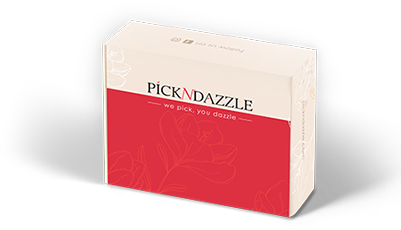But while the higher cost might cause you to categorize these skin-boosting offerings as totally out of your budget, it may help to know why exactly organic (often confused with “all natural”) products can make a bigger dent in your wallet. Here are some reasons that these goodies demand more green—and what makes them worth the splurge.
Cost 1: Shelf Life
According to Julia Teren of Thesis Beauty, organic products generally have shorter shelf life because of the pure ingredients used versus the chemicals used in drugstore brands—that is 12-20 months as opposed to three-plus years. “Usually people who are aware take long shelf life as a red flag,” she says. “So why do conventional brands aim at the unnaturally long shelf life? It may be often required by many drugstores and big box retailers because they buy in bulk to cut costs and don’t want to deal with spoilage issues.”
Organic products have shorter shelf life because their botanical ingredients have naturally limited “life” and break down after a while. “At Thesis, for example, we use mostly raw, unrefined oils which have even shorter ‘life’ but are much more nutritious for the skin than regular refined oils,” she explains. “We don’t believe that a couple extra months of shelf life are worth poorer quality of the formulation.”
Why it’s worth it: Makeup artist Tomy Rivero sees the shorter life as no big deal: “You are delivered a fresh, clean product—and, most of the time, by the time the product expires the time has come for replenishment anyway.”
Cost 2: Formulation
“If you analyze most drugstore products, the first ingredient you’ll see is Aqua/Water,” Teren says. “Many formulations are up to 80 percent water. Some have greater or smaller percentage, but essentially this is what the customer is paying for. In some drugstore or even natural brands, water can masquerade as Aloe Vera juice or herbal infusions.” As for the rest of the ingredients, Teren explains that typical brands are usually filled with emulsifiers, preservatives, fragrance, texture/feel improving chemicals—leaving a very small margin for the actual natural oils which are supposed to be the main source of nutrition for the skin.
Why it’s worth it: You’ll use less of a more potent product since organic products have higher concentrations of good-for-your-skin ingredients. “Our products are largely pure concentrated oils which make these formulas antioxidant powerhouses,” Teren says. “One of the benefits is that due to higher concentration of active ingredients in the formula, you need to use a lot less product to achieve superior results compared to cheaply made drugstore products.”
Cost 3: Ingredients
According to Sarah Villafranco, MD, of Osmia Organics, organic ingredients are one-and-a-half to two times more expensive (at least) than non-
organic ones. “An example? One ounce of organic rose essential oil is approximately $500 while the non-organic rose essential oil is a mere $280,” she says.
When you factor in how organic ingredients are grown, there’s another source for cost: “Not only are organic farms typically smaller than conventional ones, but they also, on average, take more time to produce crops because they refrain from using the chemicals and growth hormones used by conventional farmers,” says grooming and beauty brand expert David Pirrotta. “Time is money.”
Other costs for the manufacturer include paying for an organic certification, increased labor expenses, and the cost of companion planting for pest control. “Organic farmers simply incur more costs than conventional farmers, and that cost translates to the consumer,” adds Villafranco.
Why it’s worth it: Teren says that while not all organic/natural brands are waterless and completely synthetic and preservative-free, the ones that are allow you to you liberate yourself from all the pesticide residues found in conventionally grown crops that end up in many traditional beauty products. “You avoid exposure to chemicals added to skincare formulas that may have lasting impact on your overall well-being—classic example: parabens have been linked to breast cancer—and you avoid skin irritants like SLS and phenoxyethanol,” she explains.
Cost 4: Manufacturing
Many organic lines are made in small batches, driving up cost for the consumer. “Companies that have the capability to produce on a mass scale can keep costs down by buying ingredients in huge amounts,” Pirrotta explains. “Add to this a highly mechanized process of production, and even more is saved on not having to pay hourly workers.”
What the final product actually goes in becomes yet another cost. “We use mostly glass at Thesis, which is more expensive than plastic, but is recyclable and reusable,” Teren says. “Some types of plastic may also leech chemicals into final product. Also, our glass is mostly dark brown which helps you enjoy fresher products longer. Most companies prefer clear glass which makes the products look more appealing—and it’s less expensive—but by the time you start using it, it may be partially destroyed by light.”
Why it’s worth it: You can feel good about going organic. “It’s a philosophy about investing in your health, and the health of the planet,” Villafranco says. “It’s not really about whether something costs more money. It’s about whether it’s the right choice for us, the plants and the animals with whom we share our ecosystem. Once we make that the priority, we will figure out a way to pay a little extra for organic products.”
Source: www.stylecaster.com




